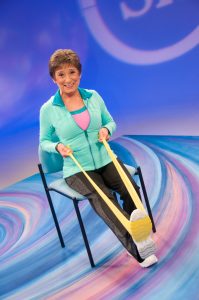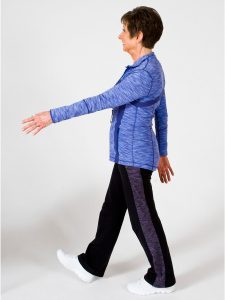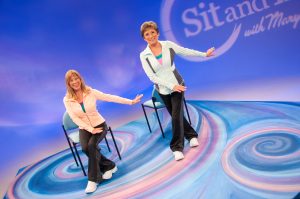
By now we are all quite familiar with the many ways exercise contributes to physical and emotional wellness. One of the hottest trends in exercise physiology research at the moment is taking a closer look at exactly how exercise benefits the brain. So far, results confirm that cognitive benefits associated with exercise are more significant than imagined. This news comes at an important time in history when alarming statistics reveal that dementia and Alzheimer’s disease affect 1 in 3 seniors in America. It appears exercise can help prevent or slow the development of these disease states. That’s one of the reasons that this information so exciting to share!
Environment and the Brain
Early studies conducted in the 1950s and 1960s, by pioneering neuroanatomy scientist, Marian Diamond, demonstrated that cognitive functioning improves in an enriched environment, one that is marked by activity, interaction and stimulation. On the flip side, an impoverished environment, defined by low activity and limited interaction, lessens learning capacity. Diamond’s research also revealed that the relationship between brain health and environment holds true throughout the continuum of life, from very young to the very old. There has been plenty of attention given to providing enriched learning environments for our youth, but we are only just beginning to understand the importance of creating active, stimulating, environments for older adults.

Exercise and the Brain
A ground-breaking 5-year study conducted at Laval University in Sainte-Foy (Quebec) monitored 5000 participants over the age of 65. They found the more a person exercises the greater the benefits for the brain and the less likely he or she is of developing dementia or Alzheimer’s. The most tested exercise modality is aerobic exercise which clearly demonstrates a positive correlation with cognitive enhancement. In addition to aerobic exercise, there are certain types of movement that can help build new neural pathways in the brain, thereby improving cognitive health. Examples include, cross-lateral movements, moving the right and left sides of the body in opposition, saying and doing at the same time, fast changes and increasing complexity of patterns and combinations of patterns. Click here to learn more from Sit and Be Fit’s blog library about how activating the spine improves the mind.

Walking and the Brain
Older adults who walk regularly show significant improvement in memory skills compared to sedentary groups. Walking improves learning ability, concentration and abstract reasoning. In one study, participant’s stroke risk was reduced by 57% for those who walked as little as 20 minutes per day. And, as it turns out, walking backwards appears to help stimulate brain function as well. (Keep in mind, walking backwards, should only be practiced in a safe environment clear of clutter and obstacles.) Whether you are walking forward or back, you will get the most out of your walking time by using good posture. In fact, the impact of posture on brain health has been studied and the results may come as a surprise to “slouchers”. Good posture increases blood flow to the brain and the amount of oxygen available to the brain. It also improves mood and memory. Yet one more good reason to work on good postural alignment throughout the day, every day.

Dance and the Brain
In a study published by the New England Journal of Medicine it is reported, “Reading, playing board games, playing musical instruments, and dancing were associated with a reduced risk of dementia.” There are plenty of other research studies demonstrating the positive impact dancing has on the brain. Learning and practicing different patterns and rhythmic movements, especially those that involve crossing the body and fast changes, challenge coordination along with reaction time and memory. Even freestyle dancing has shown to have benefits. So, go ahead and don’t be shy. Get out there and kick up your heels!
Related Blogs:
Spine Activation to Feed the Mind
Recommended Sit and Be Fit workouts for brain health:
Sit and Be Fit Brain Fitness Workout
Sit and Be Fit Chair Exercise Basics
_______________________________________________________________________________________________
Below are Google generated ads. Sit and Be Fit does not necessarily endorse products or services being advertised.
[wp_ad_camp_1]

Mostly It can appreciate that cognitive benefits associated with exercise are significant. Exercise supports not only our body but also our brain.
Love the program
Exercise is good for the brain. Regular exercise changes the brain’s functioning and improves memory and thinking skills. In my personal view exercises perform an important role for daily life activities. Firstly it makes your mind peaceful, increases true happiness and will help you to live in the present moment. I think everyone should do meditation.